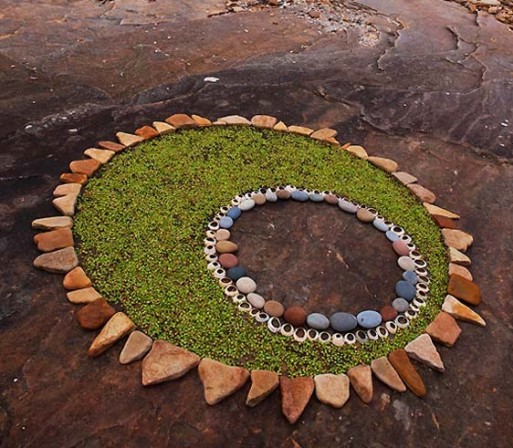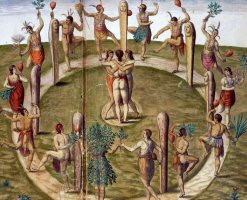Our Tip of the Week: When we think of traditional funerals and memorial services, the vision that often comes to mind is rows of seated people facing an altar. This follows the same layout of most church and temple services, where the anointed perform their religious duty during times of transition. The person providing the service and eulogy, whether clergy, family or friend, is often slightly raised above the audience. This creates a visual distinction between the audience and the ritual performance.
Some people may find that this traditional layout meets their needs, but there are other forms of creating a ritual space for a memorial or end-of-life celebration that don’t follow any specific tradition and create a more egalitarian, shared and intimate space.
Circles in particular allow for a ritual that is more about participation rather than observation. The attendees contribute to the space-making, their bodies marking the boundaries of the formed communal space.
The circle has the additional benefit of allowing people to see each other, and share in their grief and reflections together, potentially providing a medium for more people to offer their feelings or stories about the loved one whose life is being celebrated.
Circles don’t have to be hokey, or hocus-pocus, to create a meaningful affect. They are a natural form of gathering that has been with us far longer than any other ritualized performance, and despite their closed ends, they are open to multiple personal interpretations.
A circle can be incorporated into any part of a service, formal or informal, and builds a healing sense of community by gathering and cultivating shared experience, especially potent during times of loss and grief.
How-to Suggestion: Mark the boundary of the circle with a lovely ribbon or flower petals, and set up an altar in the center with photographs, candles or objects that reflect the person you are celebrating. Add a few chairs for people who may want to, or need to, sit down. Or create a circle entirely out of chairs.
If a single circle feels too close, you can set up a second ring around the outside, allowing people to choose their spot according to comfort level.
If you have a memorial service outside on your own property, plant a ring of perennials and enjoy the re-blooming each season. You can also mark a circle with rocks, creating as complex or simple of a pattern as desired.
A circle can be incorporated into any part of a service, formal or informal, and builds a healing sense of community by gathering and cultivating shared experience, especially potent during times of loss and grief.

 Our Weekly Tip: Creating Space
Our Weekly Tip: Creating Space





 “Help Me, Helen”
“Help Me, Helen”
 Recovering Cremation Remains After the Los Angeles Fires
Recovering Cremation Remains After the Los Angeles Fires
 “As Tears Go By” by Marianne Faithfull
“As Tears Go By” by Marianne Faithfull














